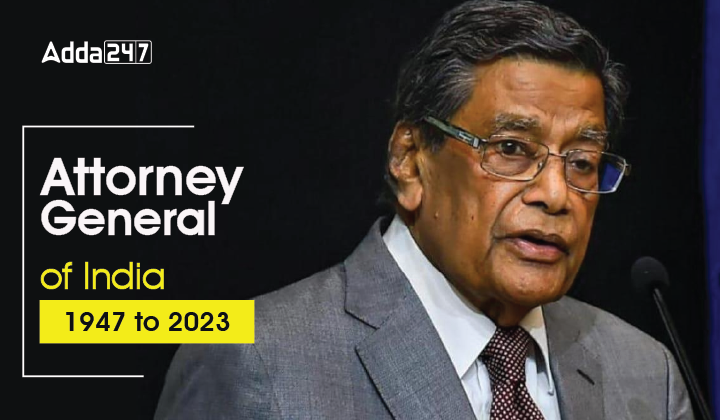
Candidates preparing for Government Teaching Exams must have extensive knowledge of the Current Affairs of national and international importance. As every teaching job exam has a dedicated section for General Awareness or General Knowledge, the candidates must check out important topics essentially the ones that have been trending in the last year before the exam. In the following article, the candidates will find the list of Attorney Generals of India Name with Positions.
Attorney General of India
The Attorney General of India is the chief legal advisor to the Government of India and is appointed by the President of India. The position is considered to be the highest law officer in the country and is part of the Executive branch of the Indian government. The Attorney General represents the Government of India in legal matters and gives legal advice to the government on various issues. The Attorney General also has the power to appear in any court of law in India, including the Supreme Court, on behalf of the Government of India.
Who is the Current Attorney General of India?
The current Attorney General of India is R. Venkataramani. The AGI is an independent constitutional officer and is not subject to the control of the Government of India. This is to ensure that the AGI can provide impartial and objective legal advice to the Government. The AGI has a wide range of functions, including advising the Government on all legal matters, appearing before the Supreme Court in all cases involving the Government, and acting as the public prosecutor in all cases of corruption and other serious crimes against the State.
List of Attorney General of India Name with Positions
Here is the list of Attorney General of India Names with Positions. The candidates will find a detailed list of Attorney General of India Name with their tenure.
| Attorney General | Term Start | Term End |
| Motilal Chimanlal Setalvad | 28 January 1950 | 1 March 1963 |
| Chander Kishan Daphtary | 2 March 1963 | 30 October 1968 |
| Niren De | 1 November 1968 | 31 March 1977 |
| S. V. Gupte | 1 April 1977 | 8 August 1979 |
| Lal Narayan Sinha | 9 August 1979 | 8 August 1983 |
| Keshava Parasaran | 9 August 1983 | 8 December 1989 |
| Soli Jehangir Sorabjee | 9 December 1989 | 2 December 1990 |
| G. Ramaswamy | 3 December 1990 | 23 November 1992 |
| Milon Kumar Banerji | 24 November 1992 | 8 July 1996 |
| Ashok Desai | 9 July 1996 | 6 April 1998 |
| Soli Jehangir Sorabjee | 7 April 1998 | 4 June 2004 |
| Milon Kumar Banerji | 5 June 2004 | 7 June 2009 |
| Goolam Essaji Vahanvati | 8 June 2009 | 11 June 2014 |
| Mukul Rohatgi | 19 June 2014 | 18 June 2017 |
| Kotayan Katankot Venugopal | 1 July 2017 | 30 September 2022 |
| R. Venkataramani | 1 October 2022 | Incumbent |
Attorney General of India Responsibility
The Attorney General is appointed by the President, typically a person qualified to be a Supreme Court judge, and serves at the President’s pleasure. The Attorney General of India holds various key responsibilities. Check out the vital responsibilities of the Attorney General of India
- Legal Advisor: Provides legal counsel to the government.
- Representation: Represent the government in legal matters, particularly in the Supreme Court.
- Public Prosecutions: Controls public interest litigations and criminal cases on behalf of the government.
- Contempt of Court: Can initiate contempt proceedings against those disrespecting the judiciary.
- Special Legal Tasks: Takes on specific legal assignments from the President or the government.
- Legal Advice: Offers legal guidance to government departments and ministries.
- Protection of State Interests: Ensures the government’s actions align with the law.















